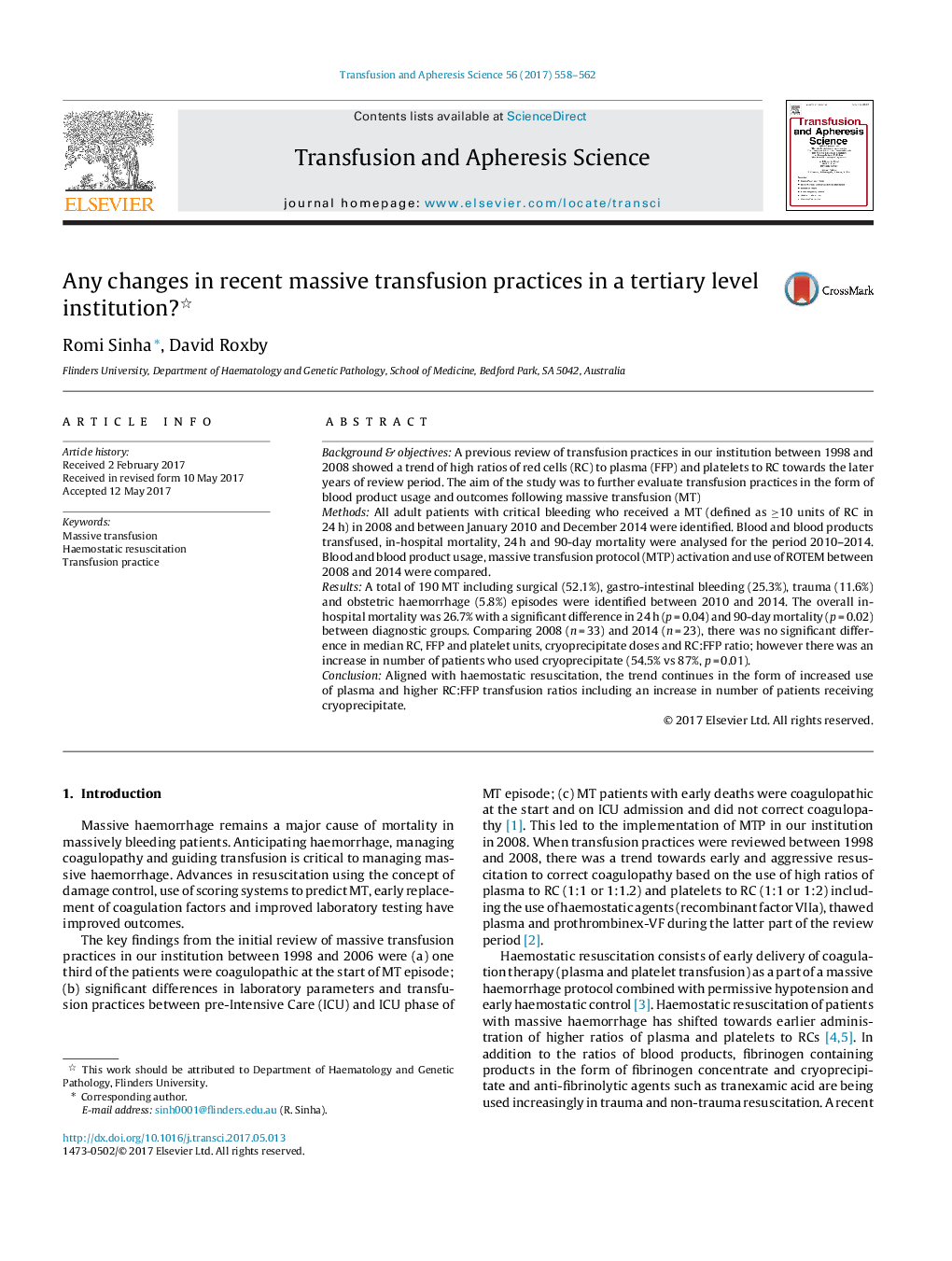| Article ID | Journal | Published Year | Pages | File Type |
|---|---|---|---|---|
| 5664541 | Transfusion and Apheresis Science | 2017 | 5 Pages |
Background & objectivesA previous review of transfusion practices in our institution between 1998 and 2008 showed a trend of high ratios of red cells (RC) to plasma (FFP) and platelets to RC towards the later years of review period. The aim of the study was to further evaluate transfusion practices in the form of blood product usage and outcomes following massive transfusion (MT)MethodsAll adult patients with critical bleeding who received a MT (defined as â¥10 units of RC in 24 h) in 2008 and between January 2010 and December 2014 were identified. Blood and blood products transfused, in-hospital mortality, 24 h and 90-day mortality were analysed for the period 2010-2014. Blood and blood product usage, massive transfusion protocol (MTP) activation and use of ROTEM between 2008 and 2014 were compared.ResultsA total of 190 MT including surgical (52.1%), gastro-intestinal bleeding (25.3%), trauma (11.6%) and obstetric haemorrhage (5.8%) episodes were identified between 2010 and 2014. The overall in-hospital mortality was 26.7% with a significant difference in 24 h (p = 0.04) and 90-day mortality (p = 0.02) between diagnostic groups. Comparing 2008 (n = 33) and 2014 (n = 23), there was no significant difference in median RC, FFP and platelet units, cryoprecipitate doses and RC:FFP ratio; however there was an increase in number of patients who used cryoprecipitate (54.5% vs 87%, p = 0.01).ConclusionAligned with haemostatic resuscitation, the trend continues in the form of increased use of plasma and higher RC:FFP transfusion ratios including an increase in number of patients receiving cryoprecipitate.
